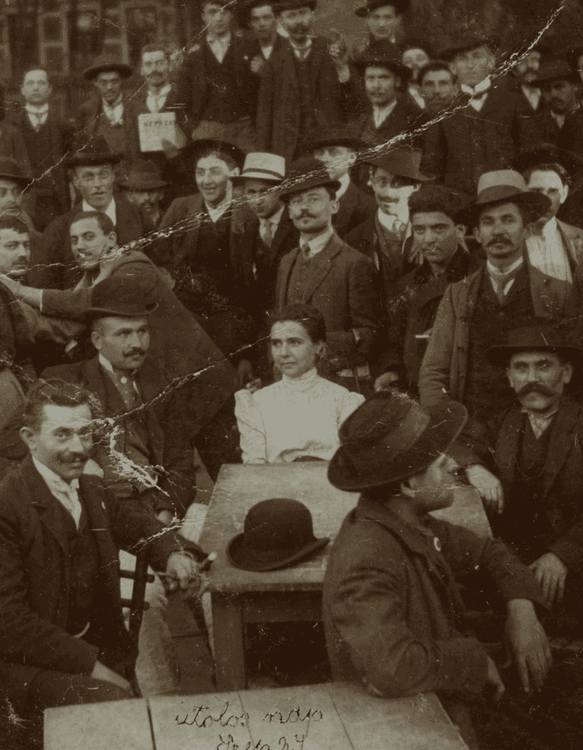Anna Hornik-Strömer
Anna Hornik-Strömer (1890–1966) was a prominent figure in Austria’s radical labour and women’s movements during the most tumultuous decades of the country’s history. Born in Vienna, she joined the Social Democratic Workers’ Party at twenty, and in 1912 founded the first girls’ group in the Socialist Youth. During World War I, she worked in the educational committee of the Association of Young Workers of Austria. During this period, she drifted towards the more radical side of the socialist movement. She entered the secret Action Committee of the Left Radicals, which challenged the social democratic leadership’s support for the war.
In January 1918 she participated in a major strike that started in the munitions works of Wiener Neustadt. The protest soon drew in several hundred thousand labourers across the Austro-Hungarian monarchy. The strikers’ calls for bread, peace and workers’ and soldiers’ councils attracted many workers. Soon afterwards, Hornik-Strömer co-founded the Communist Party of Austria (KPÖ) and became head of its Central Office for Women’s Propaganda. She edited the women’s party publication, Woman Worker (Die Arbeiterin), and sat on the party’s executive, and later central, committee. Internationally, she represented the KPÖ at several Comintern congresses, including the Fifth World Congress of the Communist International in 1924. She met with Clara Zetkin and other leading figures of the revolutionary workers’ movement. Before 1938, Hornik-Strömer also worked in the Austrian co-operative movement alongside the social democrat activist Emmy Freundlich. Following Austria’s annexation by Nazi Germany, she at first stayed in the country, but was forced to emigrate to Britain in 1939. There she joined the KPÖ group in exile and was briefly interned with her husband Leopold Hornik as a suspected communist organizer.

Anna Hornik-Strömer (Source: Bildarchiv der KPÖ (Image Archive of the Communist Party of Austria))
Returning to Vienna in 1946, she quickly resumed political activity. Hornik-Strömer focused much of her energy on the Federation of Democratic Women (BDFÖ), which she chaired in Vienna. The organization combined the pressing demand for peace with concrete labour and social goals. It called for reforms of marriage and family law, equal pay for equal work, shorter working hours and a lower retirement age for women. The Federation also organized campaigns for affordable housing, paid days off to perform household chores like laundry, repair of war-damaged windows, and relief from inflation and inadequate food rationing. The Federation’s magazine, Voice of the Woman (Stimme der Frau), dubbed these measures “politics in the saucepan”: These activities tried to link everyday household concerns to broader labour politics, bringing together unorganized women and local activists in action committees. In 1948, the BDFÖ affiliated with the Women’s International Democratic Federation (WIDF), then the world’s largest women’s organization, which was communist-aligned.
Until her death in 1966, Hornik-Strömer remained active as a communist activist and a chronicler of the Austrian labour movement. She took part in international meetings, such as the fiftieth anniversary of International Women’s Day in Copenhagen in 1950. In front of a large audience of women activists, she shared stories of the early women’s movement and recalled that men had initially mocked the first International Women’s Day demonstration in 1911 in Vienna, only to see 20,000 women march for suffrage and labour rights. With her lifelong activism, Anna Hornik-Strömer linked the militant strikes of 1918 with the reconstruction of working-class life after 1945.


